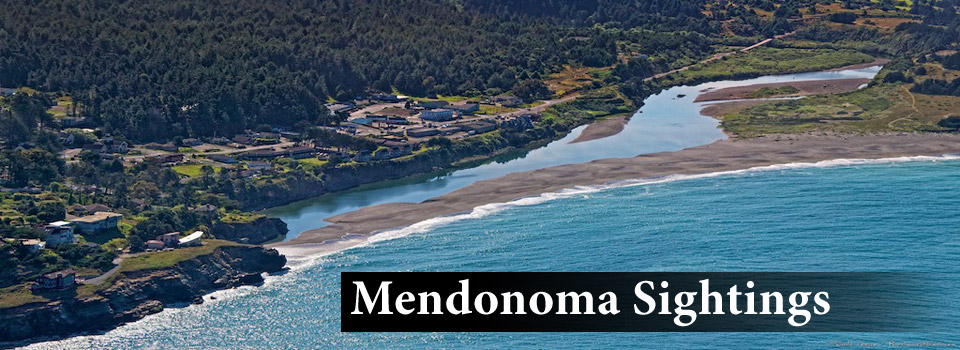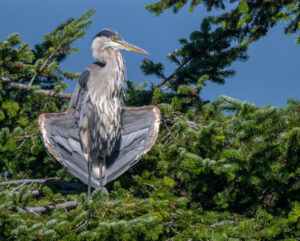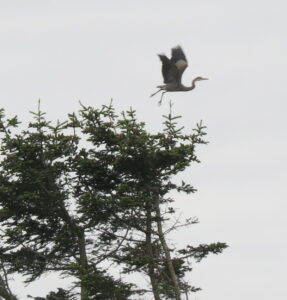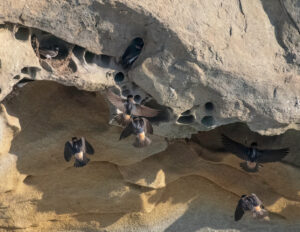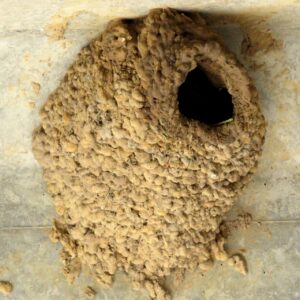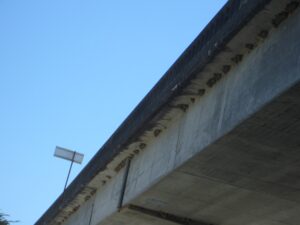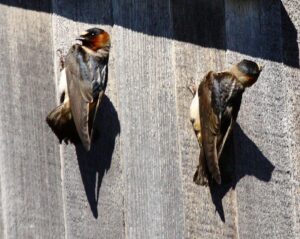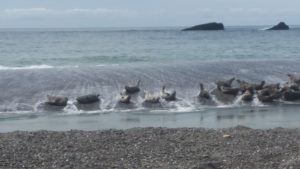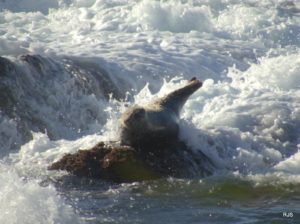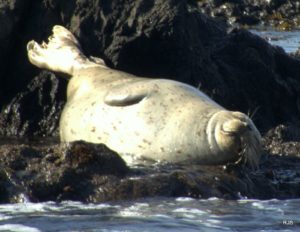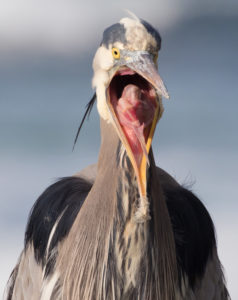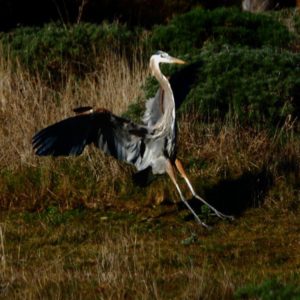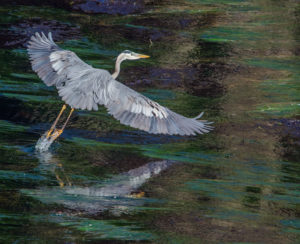Cliff Swallows have arrived and are busy building their nests of mud. You can see these beautiful swallows working hard at the north end of the Gualala Community Center building, along the entrance road to the post office. Cliff Swallows nest in colonies. Here is a photo Robert Scarolo took some years ago in a tunnel at The Sea Ranch.
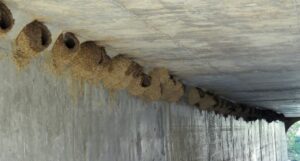
Diane Hichwa further explains. She wrote, “Our Barn Swallows build individual nests [hidden from each other]. Tree Swallows build in cavities in trees or boxes, and may be harder to find! Violet-green Swallows use nesting boxes.” Our largest swallow, the Purple Martin, uses nesting cavities in trees that other birds have made, such as woodpeckers.
Here is the beautiful Violet-green Swallow photographed by Craig Tooley.

And there is one more swallow species that returns here in the spring. Ron Bolander wrote, “I was out photographing at Gualala Point with my usual Saturday group of friends. We all photographed these Northern Rough-winged Swallows in this tree. It was nice to capture this image on a beautiful day in the park.” Diane tells me this type of swallow is found near a river, as they nest in the river’s banks.
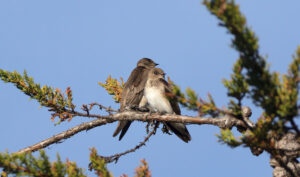
All of these swallows leave our area in the late Summer or early Fall. They are insect eaters, eating over a hundred insects a day, each one of them. In the Winter there aren’t enough insects for them to survive here, so they fly to warmer climes to our south.
If you are lucky enough to have swallows build a nest under your eves or in a light fixture, as happened one year at Surf Super’s entrance doors, think of the benefits these swallows bring by keeping the insect population under control. If you are worried about the mess the baby birds make, you can take a cardboard box and cut the sides off, leaving an inch or so. Tack that up under the nest to catch the waste, and when the birds have fledged, take it down and dispose of it. Remember that migratory birds, and their nests, are protected by law.
Thanks to Robert, Craig and Ron for allowing me to share their photos with you here.
